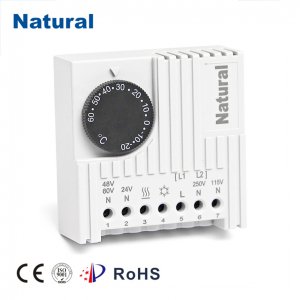With the increasing focus on energy conservation and smart home technology, the humble thermostat has undergone a significant transformation in recent years. Among the various types of thermostats available, the 24V thermostat has emerged as a versatile and efficient choice for controlling heating, ventilation, and air conditioning (HVAC) systems in both residential and commercial settings.

The Basics of 24V Thermostats A 24V thermostat, also known as a low-voltage thermostat, operates on a low voltage electrical circuit, typically 24 volts AC (alternating current). This is in contrast to line-voltage thermostats, which operate at 120 volts or 240 volts AC. The lower voltage of 24V thermostats offers several advantages, including enhanced safety and compatibility with a wide range of HVAC systems. Compatibility and Versatility One of the key strengths of 24V thermostats is their compatibility with various HVAC systems. Whether you have a forced-air furnace, a central air conditioning unit, a heat pump, or a combination of these systems, a 24V thermostat can likely work with them. This compatibility makes it a popular choice for both residential and commercial applications, providing flexibility to homeowners, businesses, and HVAC professionals. Energy Efficiency Energy efficiency is a primary concern for many homeowners and businesses today. 24V thermostats play a crucial role in optimizing energy consumption. These thermostats offer precise temperature control, allowing users to set their HVAC systems to operate only when needed. Many 24V thermostats are programmable, enabling users to create customized heating and cooling schedules to match their daily routines. This level of control can lead to substantial energy savings over time. Smart Technology Integration The rise of smart home technology has given birth to a new generation of 24V thermostats that can be controlled remotely using smartphones, tablets, or voice-activated assistants like Amazon Alexa or Google Assistant. These smart thermostats offer features like geofencing, learning algorithms, and real-time energy consumption tracking, further enhancing energy efficiency and user convenience. Easy Installation and Maintenance Installing a 24V thermostat is generally straightforward, especially when compared to line-voltage thermostats. Most 24V thermostats come with clear installation instructions, and many homeowners find them suitable for DIY installation. Additionally, maintenance is typically minimal, with most 24V thermostats requiring occasional battery replacement or software updates. Cost-Effective Choice Another advantage of 24V thermostats is their affordability. These thermostats are usually more cost-effective than their line-voltage counterparts, making them an attractive option for budget-conscious consumers. The potential energy savings they offer can often justify the initial investment in a 24V thermostat. Conclusion In conclusion, 24V thermostats have become a preferred choice for controlling HVAC systems due to their compatibility, energy efficiency, and affordability. Whether you’re looking to reduce your energy bills, integrate smart technology into your home, or simply enjoy precise temperature control, a 24V thermostat is a versatile and efficient solution. As technology continues to advance, we can expect even more innovative features and capabilities to be integrated into these essential devices, further enhancing their value in our homes and businesses.